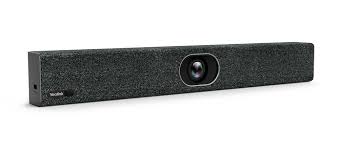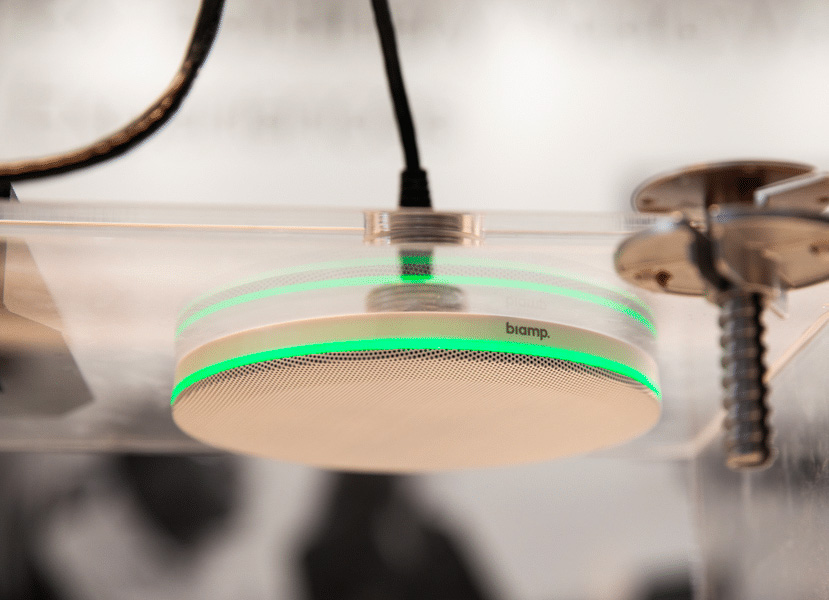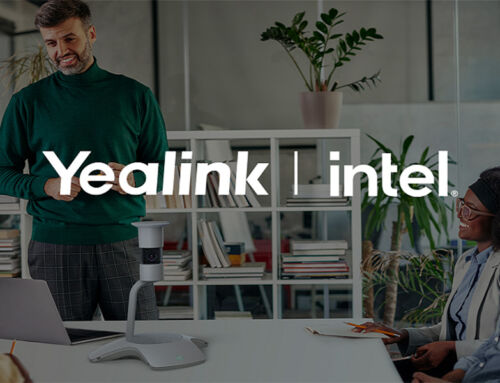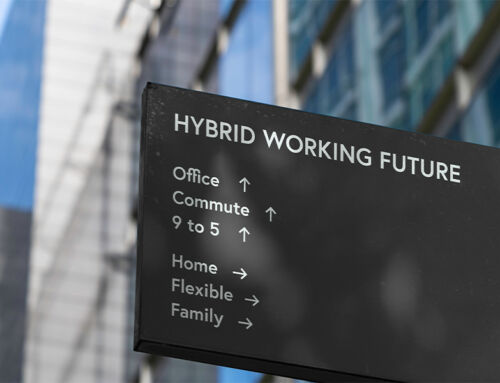In recent years, the workplace has undergone a remarkable transformation, surpassing the changes we witnessed during the 2000s and 2010s.
The emergence of hybrid work setups has become the new norm, allowing employees to divide their time between the office and their homes. Consequently, the need for in-person meetings has diminished, as both customers and vendors have learned to love the remote work option.
As a result of these changes, people’s expectations regarding meetings have evolved significantly. They now seek an effortless online interface and a seamless connection that levels the playing field for all participants. Moreover, they demand technology that can keep up with the conversation and facilitate effortless collaboration.
Addressing these challenges requires the adoption of appropriate meeting room technology. However, with the vast array of innovations in this field, it can be daunting to determine where to begin.
As a premier global integrator of AV systems, we have compiled a comprehensive list of the seven essential components of conference room AV technology for the modern workplace.
Read on to learn more!

- Displays/Screens
When someone steps into a conference room, their attention is typically drawn to the prominent display mounted on the wall or positioned on a stand.
In the past, the primary function of this hardware was to provide the visual component of conference room audiovisual equipment. However, in today’s context, the display serves an even more critical role as the fundamental platform for collaboration tools.
Companies like Yealink, Crestron, LG, Sony, and more are renowned for their quality and state-of-the-art technologies.
If you haven’t upgraded your office display recently, you’ll find newer models boast features like:
- 8K resolution: the latest benchmark in ultra-high-definition display technology, boasting a remarkable resolution of 7,680 x 4,320 pixels. This resolution is approximately four times greater than 4K displays, resulting in incredibly detailed and sharp visuals.
- Dual displays: an expanded visual area for your meetings, enabling you to simultaneously view meeting content and participants. This increased screen real estate enhances collaboration and ensures a comprehensive view of the meeting environment.
- Layout-driven displays: such as the 21:9 aspect ratio, offer a broader and more panoramic view. They are particularly suited for accommodating ultrawide layouts.

2. Collaborative Platforms
Before the pandemic, many organizations relied on audio-only conference calls as their primary communication method. However, in 2020, there was a rapid shift towards a video-first approach, driven by the need to reduce travel time and enhance meeting and collaboration efficiency.
Videoconferencing has become prevalent through popular collaboration platforms such as Zoom, Microsoft Teams, Google Workspace, and more. These platforms not only offer seamless video calls but also a range of collaborative features.
For instance, Microsoft Teams goes beyond mere audio and video communication, providing capabilities like file sharing, co-authoring, and chat settings.
3. Speakers and Microphones
Mics and speakers play a crucial role in conference room design because they greatly influence the overall meeting experience. A well-designed setup can effectively minimize issues like echo, feedback, and other distracting noises that participants may encounter.
Modern microphones and speakers are commonly positioned in three key locations: in-ceiling, on-table, or integrated within a soundbar mounted beneath the display. Each placement option offers its own advantages and ensures optimal audio quality for the conference room environment.
Depending on your specific space and intended usage, your AV integrator may suggest incorporating one or more of the following cutting-edge technologies:
- All-in-one video bar: Yealink products can help you in this area. These compact units integrate high-quality microphones, speakers, and cameras, ensuring that all meeting room participants can hear and see clearly. Remote participants also experience the same benefits.
- Beamforming microphones: Yealink’s microphones can help you here too. These intelligent microphones automatically detect the location of speakers and focus their listening capabilities in that direction, enhancing audio clarity and eliminating unwanted background noise.
Your audiovisual solutions partner may propose other sound-related enhancements to optimize the overall meeting experience as well. These may include sound masking to reduce distractions, sound absorption to improve acoustics, or noise cancellation technologies.

4. Cameras
Conference room cameras come in a variety of options, ranging from compact cameras suitable for huddle rooms to more advanced and sophisticated cameras designed for larger spaces.
When choosing a camera, the primary focus should be ensuring that its viewing angle is wide enough to capture everyone in the room, regardless of where they are sitting.
Additionally, the choice of collaboration platform may influence the type of camera required. If this happens, UTG’s design engineers can recommend cameras that are best suited for your setup.
Here are some popular camera options:
- 180-degree viewing angle cameras are specially designed for small huddle rooms. They work well for rooms that require a wider field of view too.
- Pan-tilt-zoom (PTZ) cameras are commonly used in larger, high-impact spaces like executive boardrooms and large conference rooms. These cameras offer the flexibility to pan, tilt, and zoom to capture different areas of the room as needed.
- Automatic tracking cameras are well-suited for large auditoriums or classrooms, particularly in higher education settings. A great example is the Crestron 1 Beyond as it follows and tracks the speaker while they move around the room.

5. Interfaces
In the past, conference rooms usually relied on a physical control panel to manage the in-room experience.
However, in today’s landscape, the experience is predominantly driven by the chosen collaboration platform, as mentioned earlier.
Regardless of whether your conference room incorporates components from Crestron, Logi, Yealink, or other brands, the user experience remains consistent and aligns with the collaboration platform being used.
For example, if you are running Microsoft Teams, the user experience will be the same across different hardware components.
A well-designed and user-friendly interface with a simple one-click-to-join button has become the standard for traditional conference rooms. The objective is to enable employees to effortlessly connect to the collaboration platform and seamlessly share presentations with a single touch.
If you are not utilizing a collaboration platform, companies like Crestron specialize in developing hardware for system control. Once properly programmed to integrate with your conference room equipment, both options offer excellent user experiences.
.
6. Connectivity
Wireless connectivity is highly sought-after by most users. It offers convenience when joining video calls or scheduled meetings through the collaboration platform.
For example, if users download Microsoft Teams to their mobile devices, they can easily join meetings and share their screens with the participants.
The wireless connectivity experience may vary depending on whether the user is part of your organization’s tenant or a guest. If there are frequent external guests, having a wired connection available as a backup can ensure seamless connectivity and smooth presentations when needed.
Table inserts can discreetly conceal the wired connectivity options, providing a stable and high-quality presentation experience.

7. Digital Whiteboards
Technology has permeated every aspect of the meeting experience, including the way we capture notes.
Collaboration platforms like Zoom offer on-platform capabilities that allow users to engage in real-time digital whiteboards during calls and share the whiteboard with other participants. This feature proves useful when employees are presenting over video conferencing, creating a more immersive and engaging experience for all participants.
Incorporating interactive whiteboards into your conference room equipment can be a valuable addition. Microsoft Surface Hub enables direct writing on the board using various colors, and users can also annotate web pages or documents. These interactive whiteboards also support seamless content sharing, making them more cost-effective compared to previous versions.
Whiteboard cameras like the Logitech Scribe offer enhanced functionality in conjunction with platform providers like Zoom or Teams. When content is shared, it automatically defaults to the whiteboard camera, resulting in a superior user experience.
Please note that this method only allows one-way sharing, meaning remote workers will not be able to share content to the presenter.

Overall
As you can see, there is a lot more that goes into the audiovisual setup than meets the eye.
In order for your business to succeed, your employees need to be set up for success. If they do not have the means to talk, share, and collaborate with their coworkers, then work culture and work projects are bound to crash and burn.
By paying attention to these 7 key areas of AV, you and your AV integrator will be able to find a solution that works best for your company.
Are you ready to design your AV space? Contact Ultimate Technologies Group today to speak with one of our friendly representatives!
About the Author:
Ultimate Technologies Group is the global expert in virtual communication and collaboration technology. When it comes to high-end Audio Visual technology solutions, we are trusted by some of the most respected brands:
Commercial AV News & Thought Leadership:

2022 RedDot Winner – Yealink’s MeetingBoard 65

Sound Masking vs. Sound Absorption: Improving Conference Room Acoustics

The Current State of Hybrid Work May 2022




